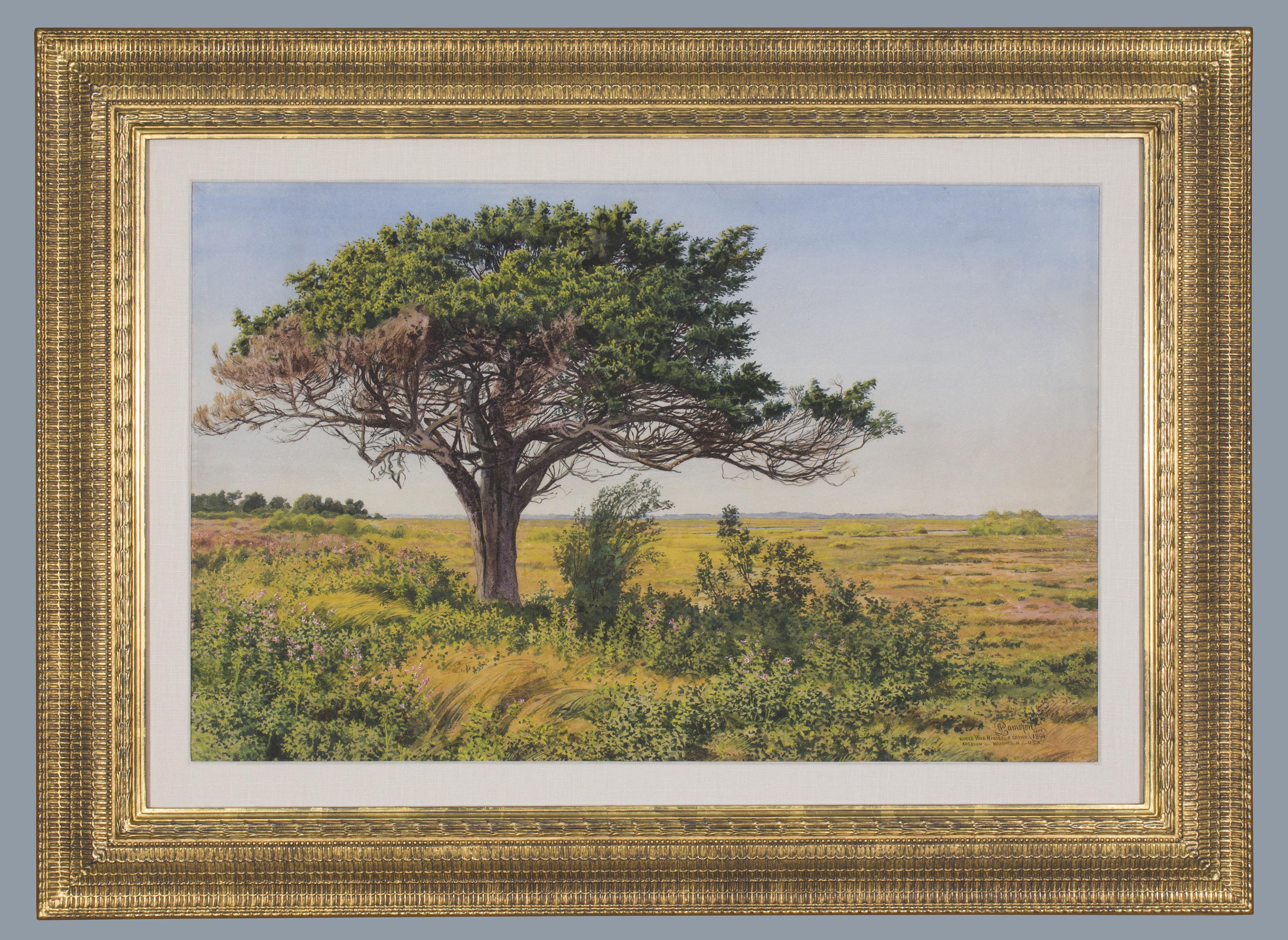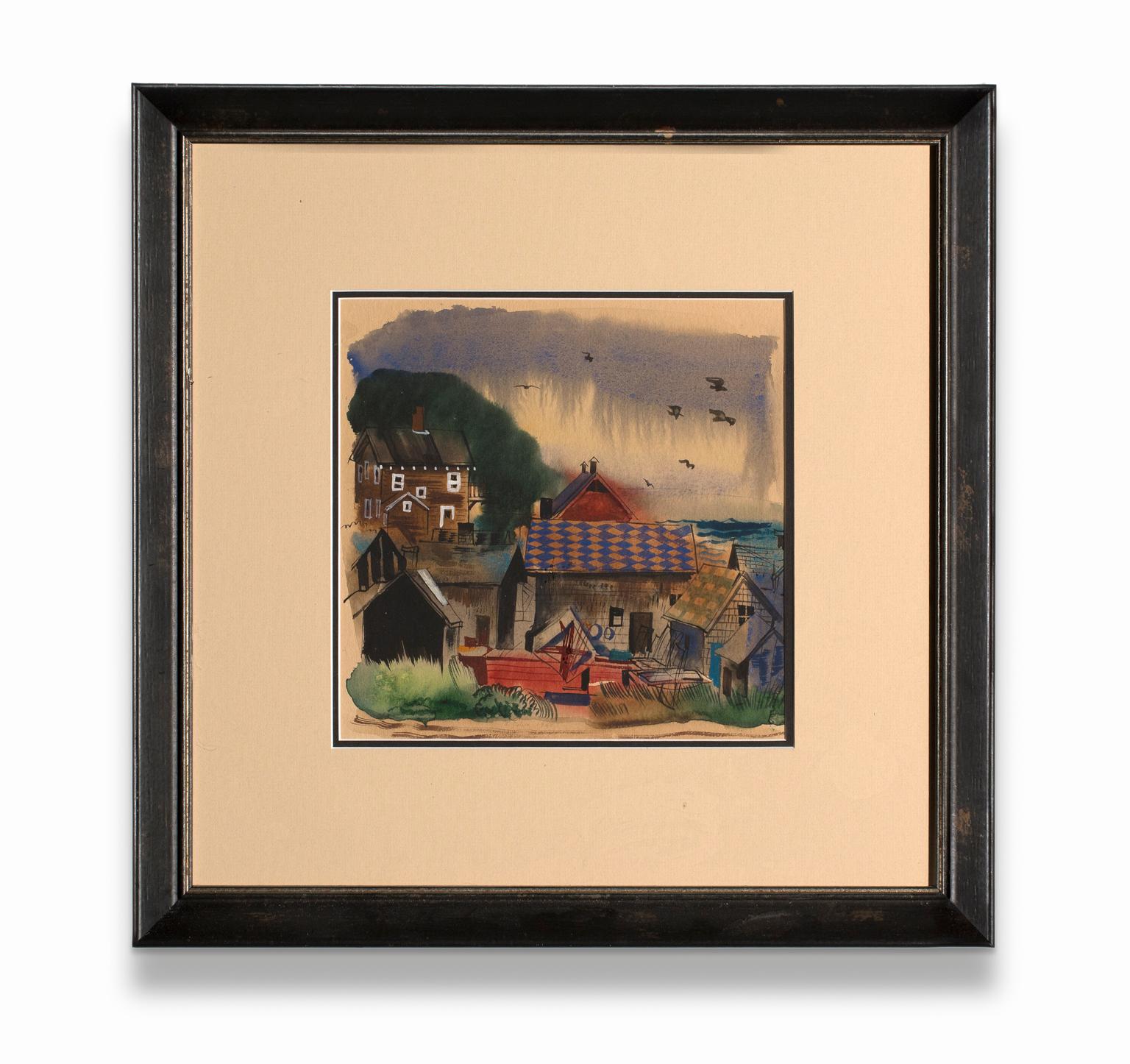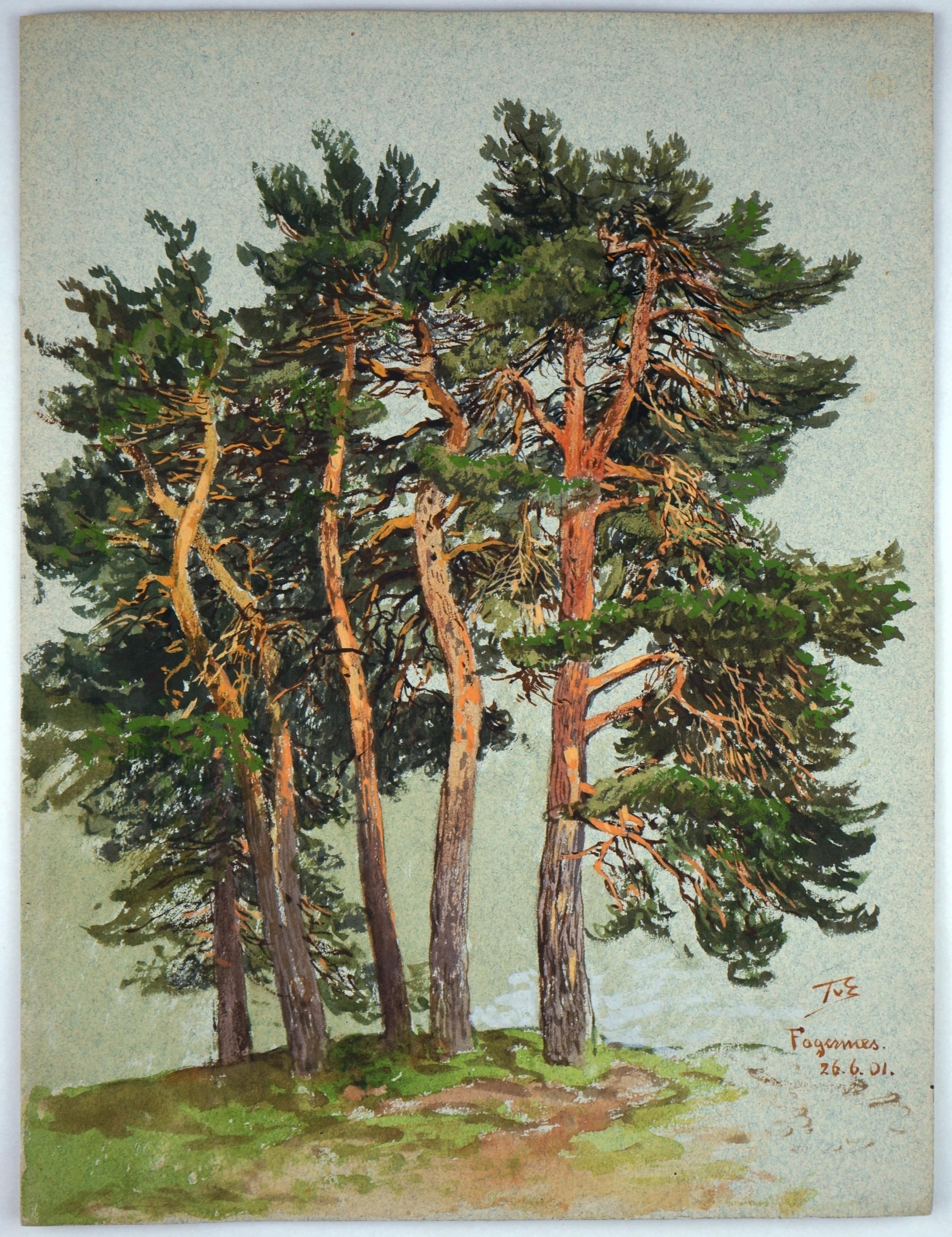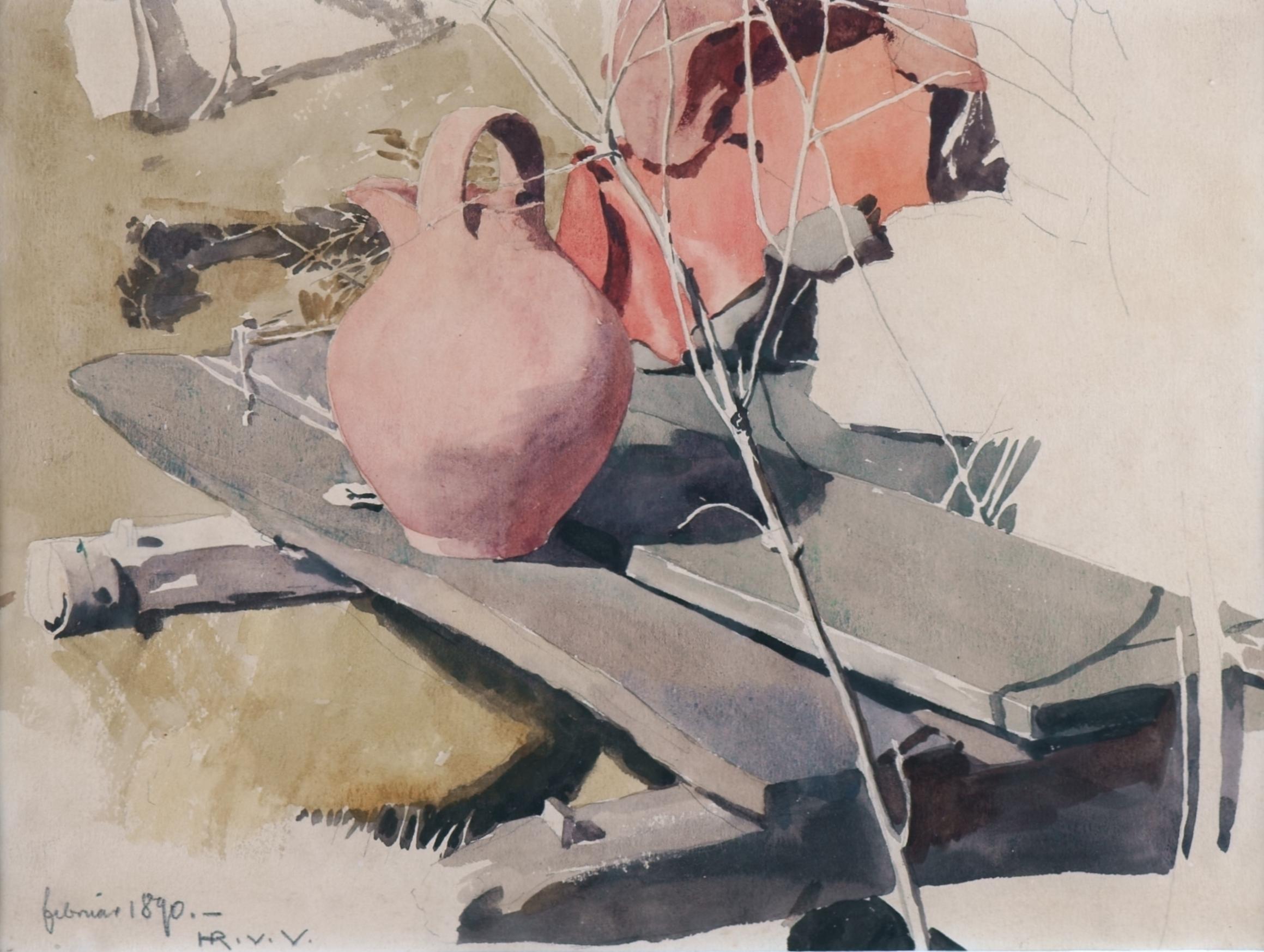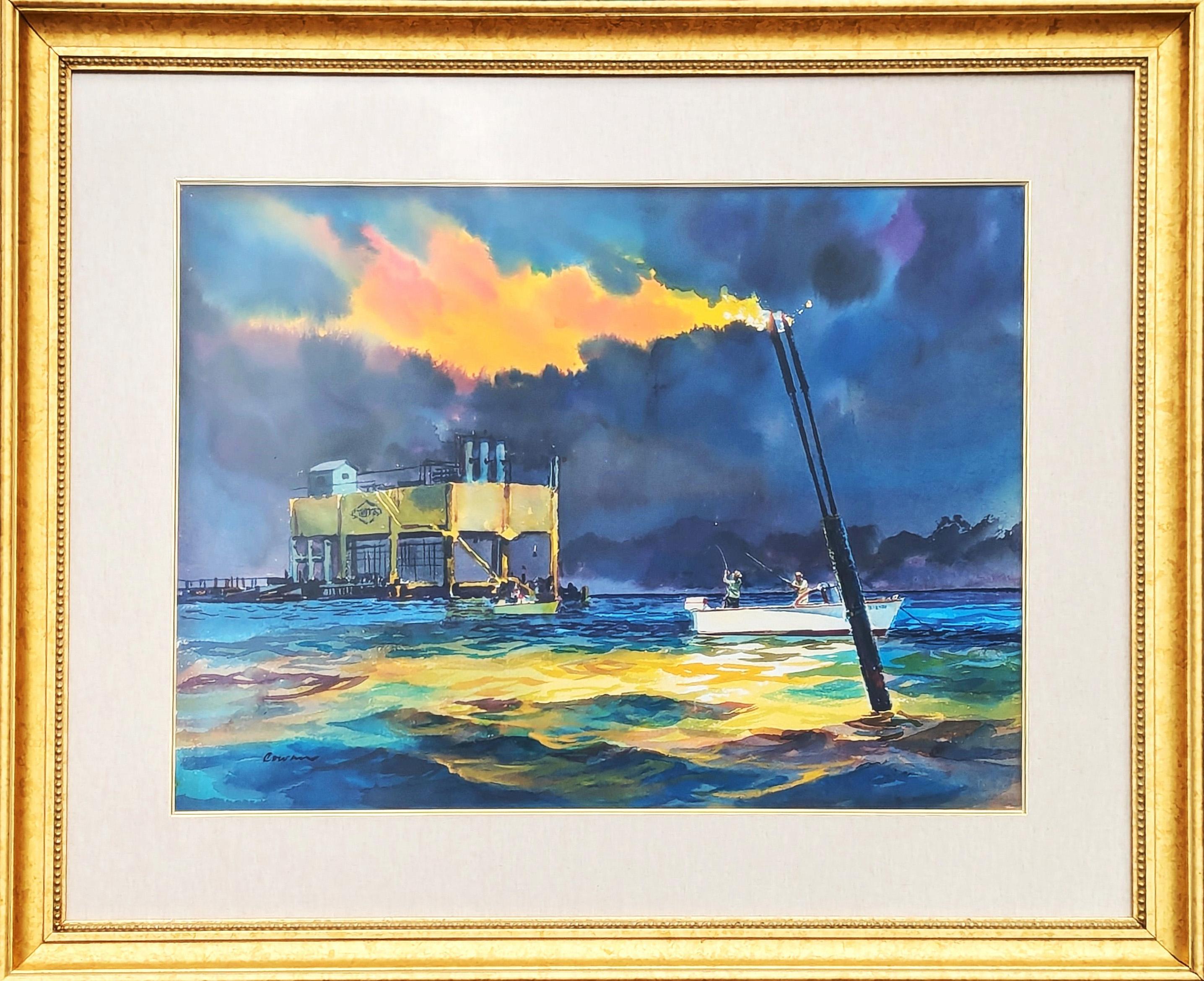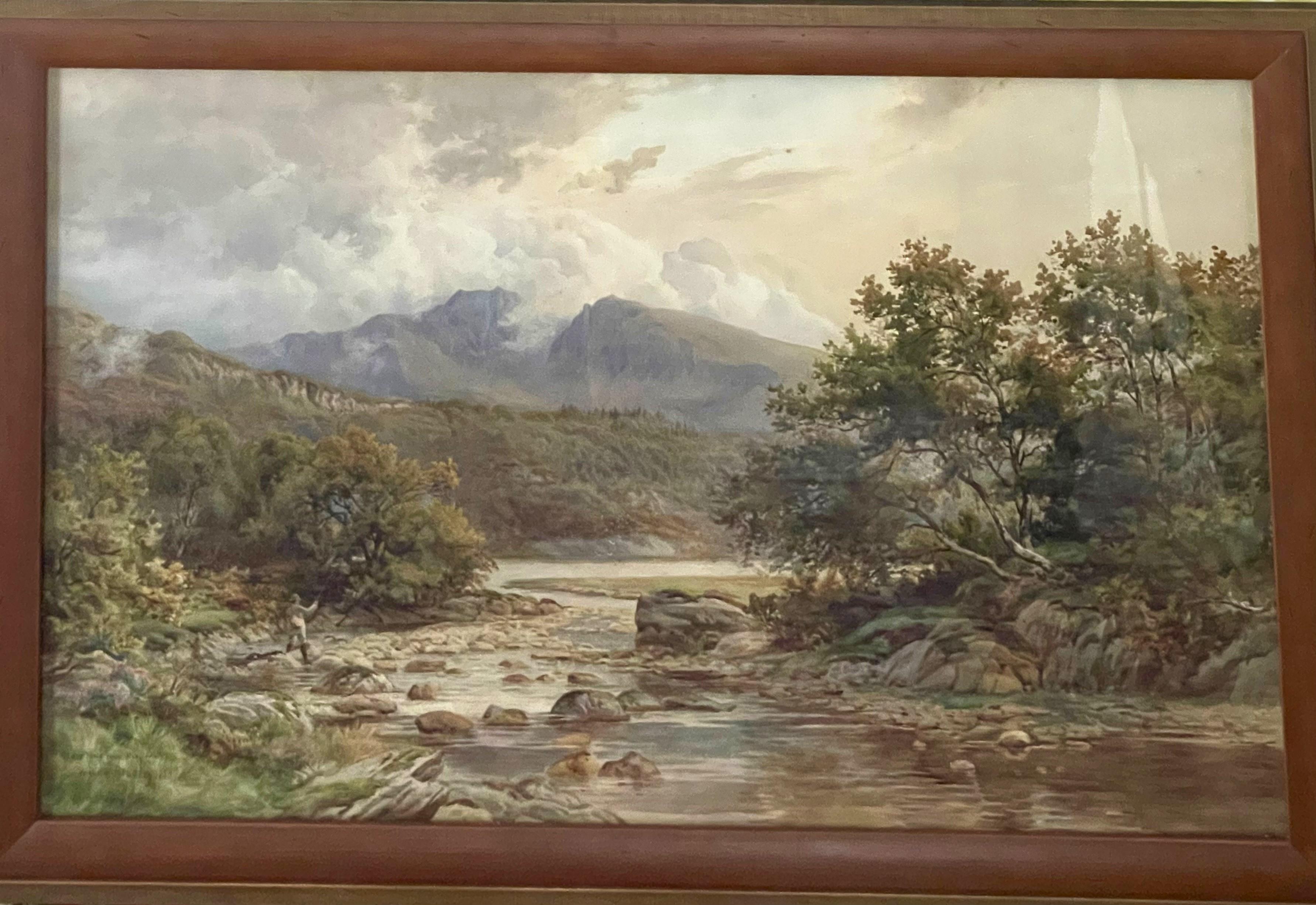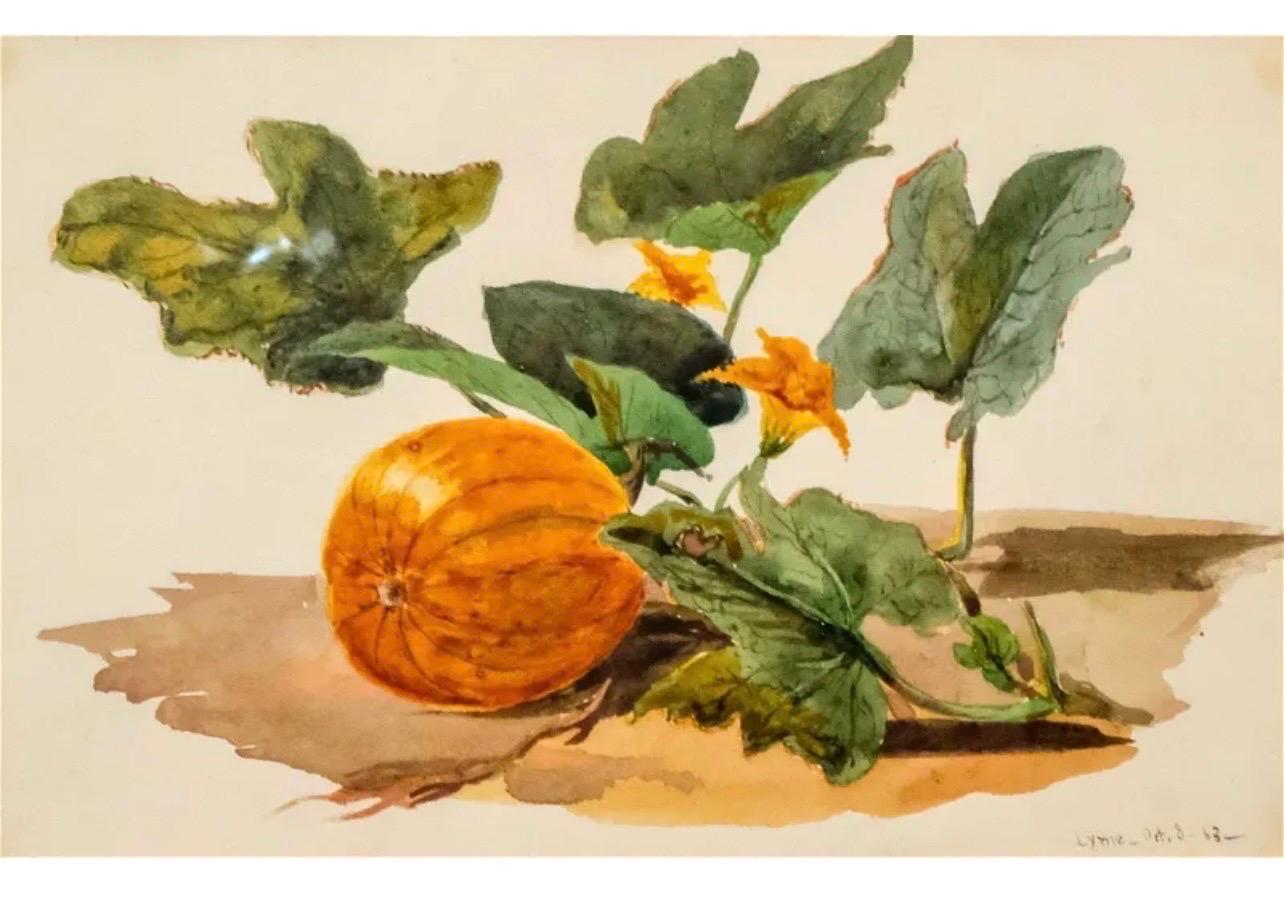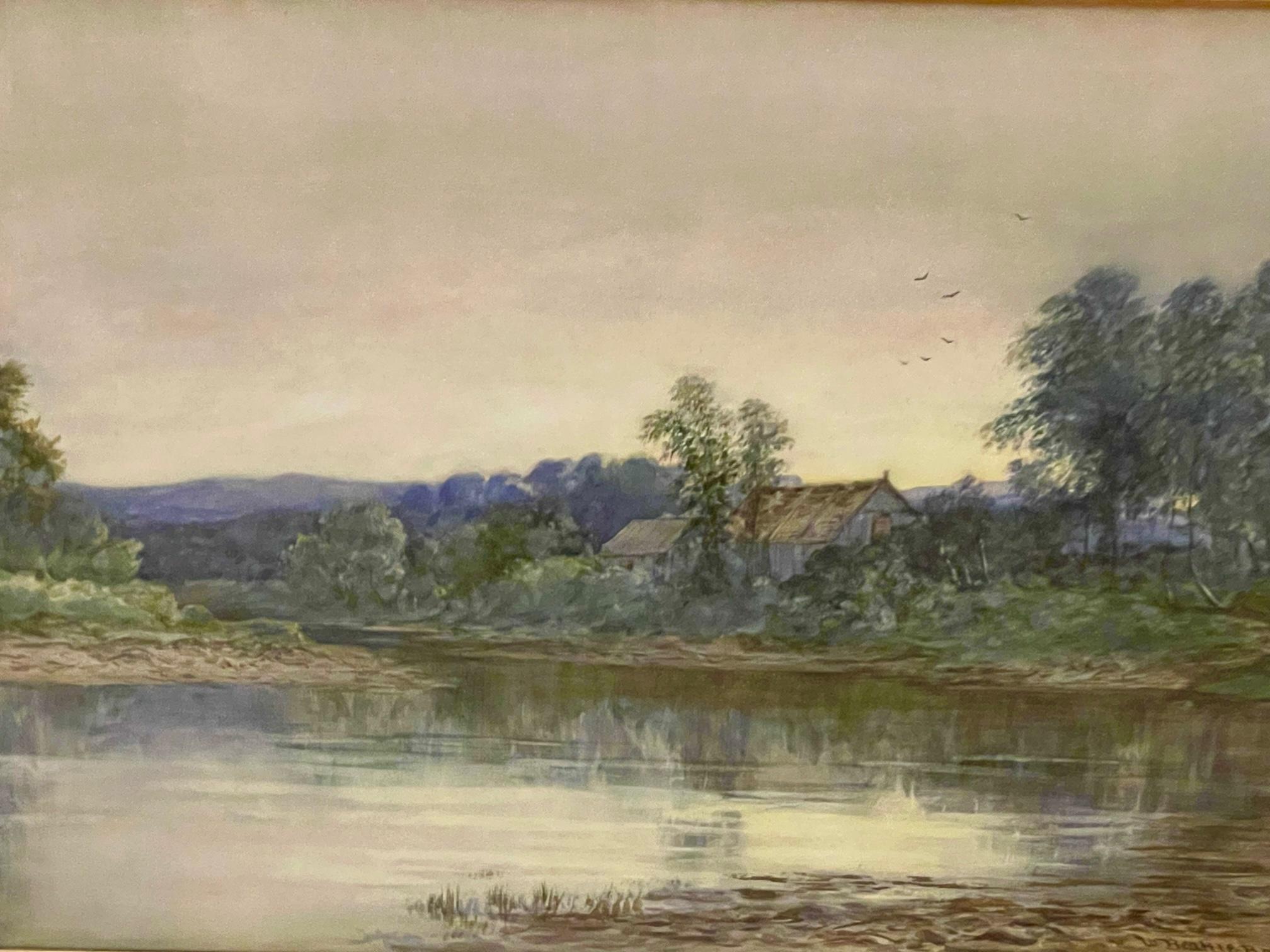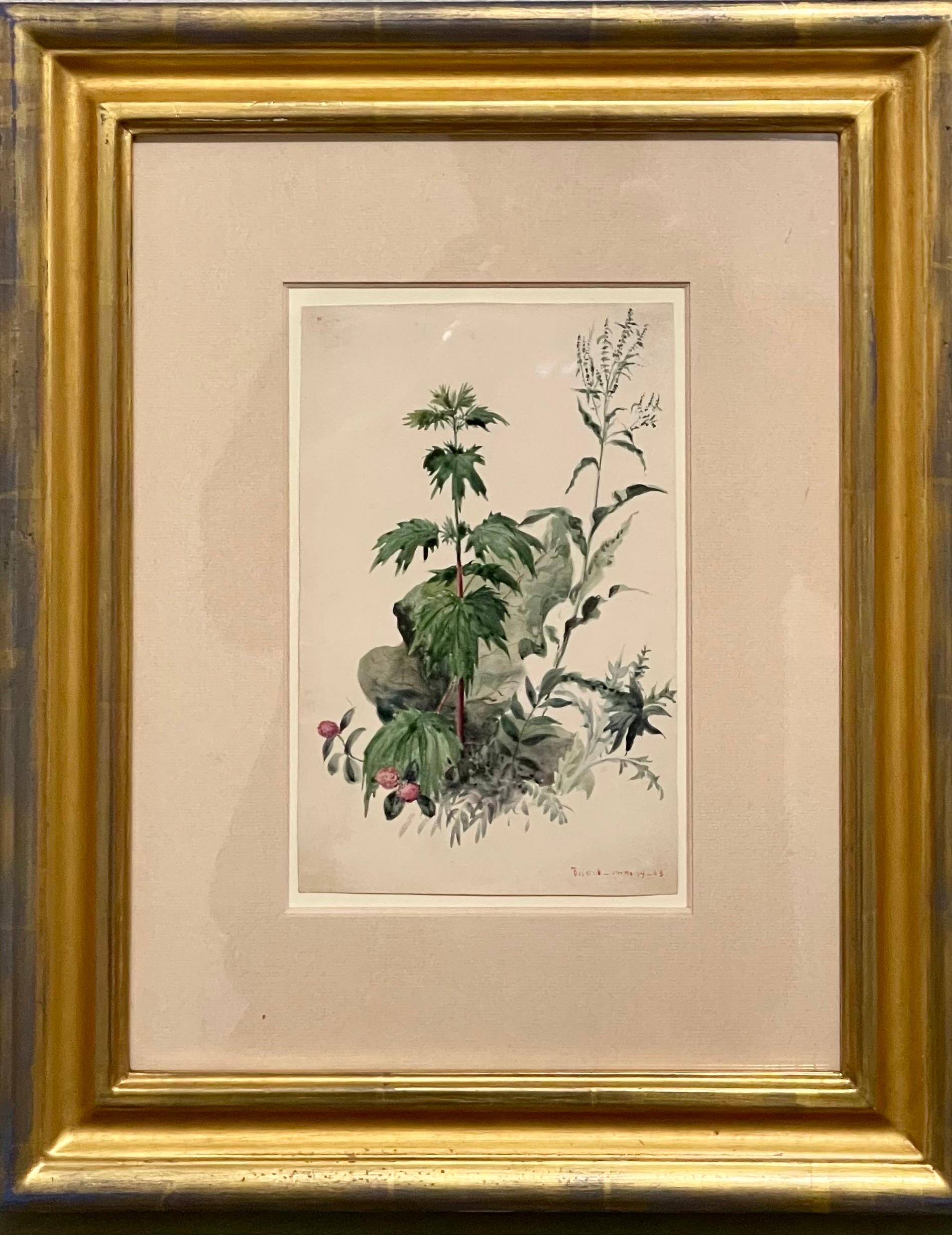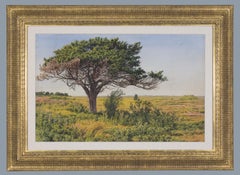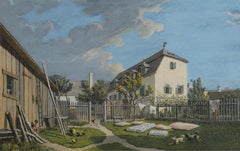
Maison à Heiligenstadt - 19th century painting, a domestic scene outdoors
View Similar Items
1 of 4
UnknownMaison à Heiligenstadt - 19th century painting, a domestic scene outdoors
About the Item
- Dimensions:Height: 6.89 in (17.5 cm)Width: 10.83 in (27.5 cm)
- Medium:
- Movement & Style:
- Period:
- Condition:
- Gallery Location:London, GB
- Reference Number:1stDibs: LU104033848661
You May Also Like
- Ludovico Zambeletti (Italian, 1881-1966) Fishing boats Marine Water Colour ItalyBy Lodovico ZambelettiLocated in Meinisberg, CHLudovico Zambeletti (Italian, 1881 - 1966) Barche da pesca - Fishing boats • Water colour on paper, visible image ca. 9 x 13.5 cm • Glased frame ca. 18 x 25 cm • Signed bottom right Ludovico Zambeletti was born on the 19th of April, 1881 into a wealthy industrialist Milanese family. He was classically educated in the arts, enrolled into the Studio all’Academia di Brera and then studied under Cessare Tallone, Guiseppe Mentessi, Vespassiano Bignami and Camillo Rapetti...Category
Mid-20th Century Naturalistic Landscape Drawings and Watercolors
MaterialsWatercolor, Paper
- Where Wild Hibiscus Grows, Absecon Island, NJ, Watercolor of Jersey Shore 1894Located in Philadelphia, PAPeter Caledon Cameron (American, born Scotland, 1852-c. 1920) Absecon Island, New Jersey, 1894 Watercolor on paper, 17 1/2 x 27 inches (sight) FRAMED: 26 1/2 x 36 1/2 inches Signed and dated at lower left: "ABSECON.ISLAND./ N.J-U.S.A Cameron/1894" N.J-U.S.A Cameron/1894" Born in Perth, Scotland, Peter Caledon Cameron won awards for drawing and penmanship at a Glasgow public school. He claimed that at the age of fourteen his watercolors were already "in demand," and that before turning twenty he had "crossed every ocean in the world, sketching and painting as he went." He attended the Government School of Design in London and was certified as an art master in 1883. Cameron immigrated to the United States that year, settled in Philadelphia, and commenced work on large history paintings such as Niagara in Winter (unlocated) and Vesuvius in Grand Eruption (unlocated) that he exhibited in various northern cities. He exhibited one painting at the Pennsylvania Academy of the Fine Arts in 1902. Nothing is known of his activities later in life. In a lengthy inscription that accompanies this watercolor, Cameron noted that Absecon was "a piece of the best sand-dune region characteristic of the whole coast of New Jersey State from Sandy Hook point in the North to Cape May Point in the extreme south." This was one among a number of studies the artist made for a large oil painting titled "Captain Kidd Burying His Treasure" (unlocated). The famous Scottish privateer Captain William Kidd...Category
1890s Naturalistic Landscape Drawings and Watercolors
MaterialsPaper, Watercolor
- "Untitled (Dock Scene)" Watercolor on Paper, Local Scene, Buildings, WaterLocated in Detroit, MIThe idyllic atmosphere of this local dock scene falls within a couple of styles one being regionalism, an American realist modern art movement that included paintings, murals, lithographs, and illustrations depicting scenes of rural and small-town America primarily in the Midwest and frequently associated with Grant Wood and Thomas Hart Benton. The other style is romanticism wherein the scene depicted is a more desired or dramatic version of what actually is. “Untitled (Dock Scene)” is typical of a small town dock scene from Michigan where Culver lived or from places as far away as Maine, but what makes it important is its easy familiarity: water, gulls or terns, slanting wood shanties, scruffy dirt patches and course grasses. It is not idealized, but does set the tone of fresh air, the scream of birds and the sun on water. This piece has been professionally reframed with acid-free matting and museum glass. In a 1952 Detroit Free Press article, entitled “Artist Explains His Work,” Culver was asked why he painted the way he did. He stated: “I try to ‘see’ though not too exactly; I try to think though not too ponderously; I feel emotion yet I try not to become overwrought. I interpret rather than describe, and design rather than depict. I work with values, not light and shade; hence, when I am successful, I achieve substance rather than three-dimensional form, and this satisfies me as being wholly sufficient. In my work I wish to be serious without becoming a bore, exuberant without being frivolous, humorous without being silly. I believe that good paintings are conceived, not contrived; and I am interested in art much more than in pictures.” Charles Culver...Category
1940s Naturalistic Landscape Drawings and Watercolors
MaterialsWatercolor, Paper
- Norwegian Pine Grove - The inner glow of the trees -Located in Berlin, DEThemistokles von Eckenbrecher (1842 Athens - 1921 Goslar), Norwegian pine grove, 1901. Watercolor on blue-green paper, 30 x 22 cm. Signed, dated and inscribed in his own hand "TvE. Fagermes [i.e. Fagermes]. 26.6.[19]01." - Slight crease throughout at left margin, otherwise in good condition. About the artwork Themistokles von Eckenbrecher often traveled to Norway to study the nature that fascinated him there. On June 26, 1901, near the southern Norwegian town of Fagernes, in the summer evening sun, he saw a small pine grove, which he immediately captured in a watercolor. He exposed the trees growing on a small hill in front of the background, so that the pines completely define the picture and combine to form a tense motif. The tension comes from the contrast of form and color. The trunks, growing upward, form a vertical structure that is horizontally penetrated by the spreading branches and the pine needles, which are rendered as a plane. This structural tension is further intensified by the color contrast between the brown-reddish iridescent trunks and branches and the green-toned needlework. Themistokles von Eckenbrecher, however, does not use the observed natural scene as an inspiring model for a dance of color and form that detaches itself from the motif and thus treads the path of abstracting modernism. Its inner vitality is to be brought to light and made aesthetically accessible through the work of art. It is precisely in order to depict the inner vitality of nature that von Eckenbrecher chooses the technique of watercolor, in which the individual details, such as the needles, are not meticulously worked out, but rather a flowing movement is created that unites the contrasts. The trees seem to have formed the twisted trunks out of their own inner strength as they grew, creatingthose tense lineations that the artist has put into the picture. The inner strength continues in the branches and twigs, culminating in the upward growth of the needles. At the same time, the trunks, illuminated by the setting sun, seem to glow from within, adding an almost dramatic dimension to the growing movement. Through the artwork, nature itself is revealed as art. In order to make nature visible as art in the work, von Eckenbrecher exposes the group of trees so that they are bounded from the outside by an all-encompassing contour line and merge into an areal unity that enters into a figure-ground relationship with the blue-greenish watercolor paper. The figure-ground relationship emphasizes the ornamental quality of the natural work of art, which further enforces the artwork character of the group of trees. With the presentation of Themistokles von Eckenbrecher's artistic idea and its realization, it has become clear that the present watercolor is not a study of nature in the sense of a visual note by the artist, which might then be integrated into a larger work context, but a completely independent work of art. This is why von Eckenbrecher signed the watercolor. In addition, it is marked with a place and a date, which confirms that this work of nature presented itself to him in exactly this way at this place at this time. At the same time, the date and place make it clear that the natural work of art has been transferred into the sphere of art and thus removed from the time of the place of nature. About the artist Themistocles' parents instilled a life of travel in their son, who is said to have spoken eleven languages. His father, who was interested in ancient and oriental culture, was a doctor and had married Francesca Magdalena Danelon, an Italian, daughter of the British consul in Trieste. During a stay in Athens - Gustav von Eckenbrecher was a friend of Heinrich von Schliemann and is said to have given him crucial clues as to the location of Troy - Themistokles saw the light of day in 1842. After an interlude in Berlin, where Themistokles was educated at the English-American School, the journey began again. From 1850 to 1857 the family lived in Constantinople, after which the father opened a practice in Potsdam, where Themistokles, who wanted to become a painter, was taught by the court painter Carl Gustav Wegener. In 1861 the von Eckenbrechers left Potsdam and settled in Düsseldorf. There Themistokles received two years of private tuition from Oswald Aschenbach, who greatly admired the talented young artist. After his artistic training, he undertook extensive travels, often accompanied by Prince Peter zu Sayn-Wittgenstein, which took him to northern and eastern Europe, but above all to the Middle East and even to South America. The paintings that resulted from these journeys established his artistic reputation and led to his participation in large panoramas such as the 118 x 15 metre Entry of the Mecca Caravan into Cairo, painted for the City of Hamburg in 1882. 1882 was also the start of a total of 21 study trips to Scandinavia, most of them to Norway, and the unique Norwegian landscape with its rugged fjords became a central motif in his work. Along with Anders Askevold and Adelsteen Normann...Category
Early 1900s Naturalistic Landscape Drawings and Watercolors
MaterialsWatercolor
$1,054 Sale Price20% Off - Clay jug on a bench - The essence of the clay jar revealed by the sunlight -By Hans Richard von VolkmannLocated in Berlin, DEHans Richard von Volkmann (1860 Halle (Saale) - 1927 ibid.), Clay jug on a bench. Pencil and Watercolour on paper. 20 x 26,7 cm (visible size), 37 x 45 cm (frame), dated and monogrammed lower left "Februar 1890 - HR. V. V." - Minimally tanned. Framed behind glass in a passepartout. About the artwork Using the technique of his early youth - pencil and watercolour - Hans Richard von Volkmann depicts a still life. However, this is not a conventional indoor still life, but an open-air depiction, painted outdoors and not in the studio. It is therefore an open-air painting, characteristic of von Volkmann's oeuvre, which could have been painted in the Willingshausen colony of painters, where open-air painting was programmatically practised there and the artist stayed there that year. And indeed, this painting is a manifesto of open-air painting. Von Volkmann demonstrates that leaving the studio for the light of nature leads to an entirely new quality of art. To prove this, he uses the genre of still life, which can be described as the studio subject par excellence. Moreover, light plays an essential role in the classical still life. It is the real protagonist of the still life. And it is precisely this moment, essential to the still life, that von Volkmann exploits to demonstrate the potential of plein-air painting: He presents the objects as they appear in the sunlight. The date of February and the bare branches in the foreground make it clear that this is a clear winter day in bright sunlight. The delicate plant in the foreground casts a clearly defined shadow, as does the jug. However, the shadow is most pronounced on the jug itself: The underside of the handle appears almost black, making the top, and therefore the jug itself, shine all the more brightly. The shining of the objects in the sunlight is also visible on the bench. As complementary phenomena to the shadow zones, light edges can be seen on the boards of the seats and the upper foot of the bench shines entirely in the light. To achieve this intensity of light, von Volkmann activated the bright white of the painting ground. By depicting the objects in glistening sunlight, von Volkmann demonstrates that this quality of light is only to be found outdoors. And this light leads to a new way of looking at the objects themselves. The jug on the bench seems like an accidental arrangement, as if the artist had stumbled upon this unintentional still life and captured it with fascination. And in this fascination there is a moment of realisation that refers to the objects themselves. It is only when they shine brightly in the sunlight that their true nature is revealed. In this way, sunlight allows the objects to come into their own, so to speak. Sunlight, which is not present in the studio, gives the still life an entirely new dimension of reality, which is also reflected in the colours interwoven by the sunlight: The bench and the jug stand in a harmonious grey-pink contrast to the green of the implied meadow. The emphasis on the jug as the central subject of the picture also implies that the watercolour has not been completed. This non finito inscribes a processuality into the picture, making it clear that something processual has been depicted, the temporality of which has been made artistically permanent. This is why von Volkmann signed the painting and dated it to the month. About the Artist Von Volkmann made his first artistic attempts at the age of 14. He painted many watercolours of his home town of Halle. This laid the foundation for his later outdoor painting. In 1880 his autodidactic beginnings were professionalised with his admission to the Düsseldorf Art Academy. There he studied under Hugo Crola, Heinrich Lauenstein, Johann Peter Theodor Janssen and Eduard von Gebhardt until 1888. Von Volkmann then moved to the Karlsruhe Academy, where he was Gustav Schönleber's master pupil until 1892. In 1883 he came for the first time to Willingshausen, Germany's oldest painters' colony, at the suggestion of his student friend Adolf Lins...Category
1890s Naturalistic Still-life Drawings and Watercolors
MaterialsWatercolor
- Oldham from the Surrounding Hills. Original Framed Landscape Watercolor . CityBy Robert LittlefordLocated in Sutton Poyntz, DorsetRobert Littleford. English ( b.1940 ). Oldham From the Surrounding Hills, 1984. Watercolor. Signed. Image size 14 inches x 21.3 inches ( 35.5cm x 54cm ). Frame size 21 inches x 28.5...Category
Late 20th Century Naturalistic Landscape Drawings and Watercolors
MaterialsWatercolor

